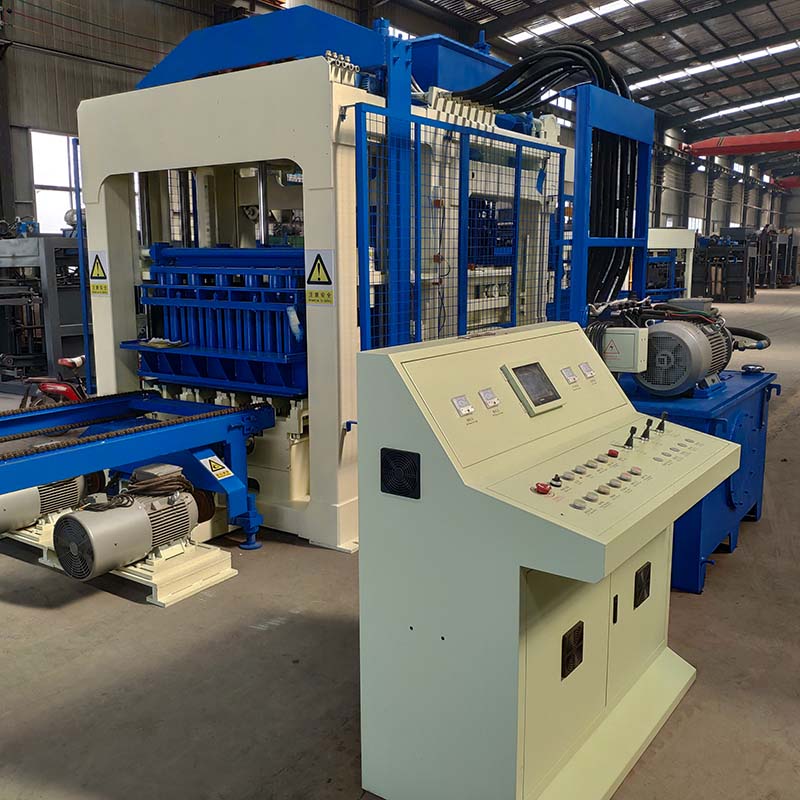
Image source:Aiwei block machine
The construction industry has witnessed remarkable advancements in technology over the years, and one innovation that has significantly impacted the way buildings and structures are constructed is hydraulic concrete block machines. These machines have revolutionized the construction process by providing efficient, cost-effective, and sustainable solutions for producing concrete blocks. In this article, we will delve into the world of hydraulic concrete block machines, exploring their evolution, technology, applications, and the transformative impact they have had on the construction industry.
Introduction
Concrete blocks are a fundamental building material used in various construction projects worldwide. Traditionally, these blocks were manufactured through manual labor, which was time-consuming, labor-intensive, and often led to inconsistencies in quality. The introduction of hydraulic concrete block machines has addressed these issues, transforming the production of concrete blocks into a streamlined and automated process.
Evolution of Hydraulic Concrete Block Machines
The history of hydraulic concrete block machines dates back to the early 20th century when manual block-making processes were prevalent. The need for a more efficient and consistent method of block production led to the invention of the first hydraulic block-making machine. Over the decades, these machines have evolved significantly in terms of design, capacity, and automation.
Early hydraulic block machines relied on basic hydraulic principles to compress concrete mixtures into blocks. Today’s machines are equipped with advanced hydraulic systems, computerized controls, and innovative features that enhance their performance and versatility.
How Hydraulic Concrete Block Machines Work
Hydraulic concrete block machines operate on the principle of hydraulic pressure. They consist of a hydraulic system, a hopper for concrete mixture, a mold, and a press head. Here’s a simplified breakdown of their functioning:
- Concrete Mixing: The process begins with the preparation of the concrete mixture, which typically consists of cement, sand, aggregate, and water. The quality of the mixture directly impacts the strength and durability of the blocks.
- Filling the Hopper: The concrete mixture is loaded into the machine’s hopper, which feeds it into the mold.
- Compaction: The hydraulic system activates the press head, which exerts tremendous pressure on the concrete mixture inside the mold. This pressure compacts the mixture, removing excess air and ensuring that the blocks are dense and strong.
- Curing: After compaction, the blocks remain in the mold for a specific duration to cure and gain strength. Some machines include curing chambers to expedite this process.
- Ejection: Once cured, the hydraulic system releases the press head, and the blocks are ejected from the mold. They are then ready for further curing and storage.
Advantages of Hydraulic Concrete Block Machines
Hydraulic concrete block machines offer a multitude of advantages that have made them indispensable in the construction industry:
1. Efficiency and Productivity
One of the primary advantages of hydraulic machines is their efficiency. They can produce a large number of blocks in a relatively short time, significantly increasing productivity compared to manual methods. This efficiency is crucial in meeting the demands of large-scale construction projects.
2. Consistency in Block Quality
Hydraulic systems provide precise control over the compaction process. This results in consistent block quality with uniform dimensions, smooth surfaces, and high compressive strength. Such consistency is essential for ensuring the structural integrity of buildings.
3. Design Flexibility
Hydraulic concrete block machines are designed to accommodate various block sizes, shapes, and configurations. This flexibility allows architects and builders to explore creative design possibilities, enhancing the aesthetic appeal of structures.
4. Reduced Labor Dependency
Automation reduces the need for manual labor in the block-making process. This not only saves on labor costs but also minimizes the physical strain on workers.
5. Cost-Effectiveness
While the initial investment in hydraulic concrete block machines may be substantial, the long-term cost savings are significant. Reduced labor costs, lower material wastage, and increased production efficiency contribute to cost-effectiveness.
6. Sustainability
Hydraulic block machines contribute to sustainable construction practices. They minimize material wastage, use energy-efficient hydraulic systems, and produce durable blocks that reduce the need for repairs or replacements over time.
Applications of Hydraulic Concrete Block Machines
Hydraulic concrete block machines find applications in various construction projects, including:
- Residential and commercial buildings
- Roads and pavements
- Retaining walls
- Bridges and culverts
- Landscaping and hardscaping projects
- Industrial structures
Their versatility and ability to produce different types of blocks make them suitable for a wide range of construction needs.
Conclusion
Hydraulic concrete block machines have undoubtedly revolutionized the construction industry. Their efficiency, consistency in block quality, design flexibility, and cost-effectiveness have made them indispensable tools for builders and contractors around the world. As technology continues to advance, we can expect even more innovative features and sustainable practices to be integrated into these machines, further enhancing their role in shaping the future of construction. With their ability to streamline block production, hydraulic concrete block machines are paving the way for faster, more sustainable, and aesthetically pleasing construction projects across the globe.
